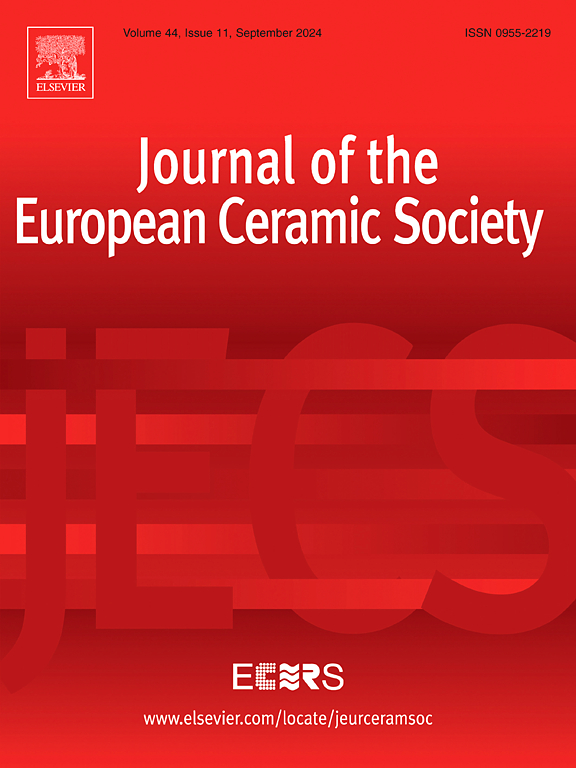Optimized configuration entropy for synergistic enhancement of thermoelectric performance for SrTiO3-based ceramics
IF 5.8
2区 材料科学
Q1 MATERIALS SCIENCE, CERAMICS
Journal of The European Ceramic Society
Pub Date : 2025-02-14
DOI:10.1016/j.jeurceramsoc.2025.117290
引用次数: 0
Abstract
High-entropy design has proven effective for optimizing thermoelectric properties, particularly thermal conductivity. However, only appropriate configuration entropy can synergistically enhance thermoelectric performance. Here, La, Nd, Dy and Y are used to modulate configuration entropy of SrTiO3-based ceramics. Thermodynamic evaluations suggest that (Sr1–4xLaxNdxDyxYx)TiO3 components, with configuration entropy from 1.05 to 4.43 J mol−1 K−1, can form single-phase cubic structures. High electrical conductivity and Seebeck coefficient result in power factor of 1213 μW K−2 m−1 at 473 K, exceeding 3 times higher than typical high-entropy ceramics. Point defects, mainly inducing stress field fluctuations, cause lattice thermal conductivity of 3.0 W m−1 K−1 at 973 K, rivalling that of high-entropy ceramics. Ultimately, maximum zT value of 0.2 (x = 0.02, 0.025, 0.03) at high-temperatures surpasses most high-entropy ceramics. Hence, configuration entropy from 3.24 to 4.43 J mol−1 K−1 is more conducive for synergistically optimizing electro-thermal transport properties and enhancing zT in (Sr1–4xLaxNdxDyxYx)TiO3 ceramics.
求助全文
约1分钟内获得全文
求助全文
来源期刊

Journal of The European Ceramic Society
工程技术-材料科学:硅酸盐
CiteScore
10.70
自引率
12.30%
发文量
863
审稿时长
35 days
期刊介绍:
The Journal of the European Ceramic Society publishes the results of original research and reviews relating to ceramic materials. Papers of either an experimental or theoretical character will be welcomed on a fully international basis. The emphasis is on novel generic science concerning the relationships between processing, microstructure and properties of polycrystalline ceramics consolidated at high temperature. Papers may relate to any of the conventional categories of ceramic: structural, functional, traditional or composite. The central objective is to sustain a high standard of research quality by means of appropriate reviewing procedures.
 求助内容:
求助内容: 应助结果提醒方式:
应助结果提醒方式:


